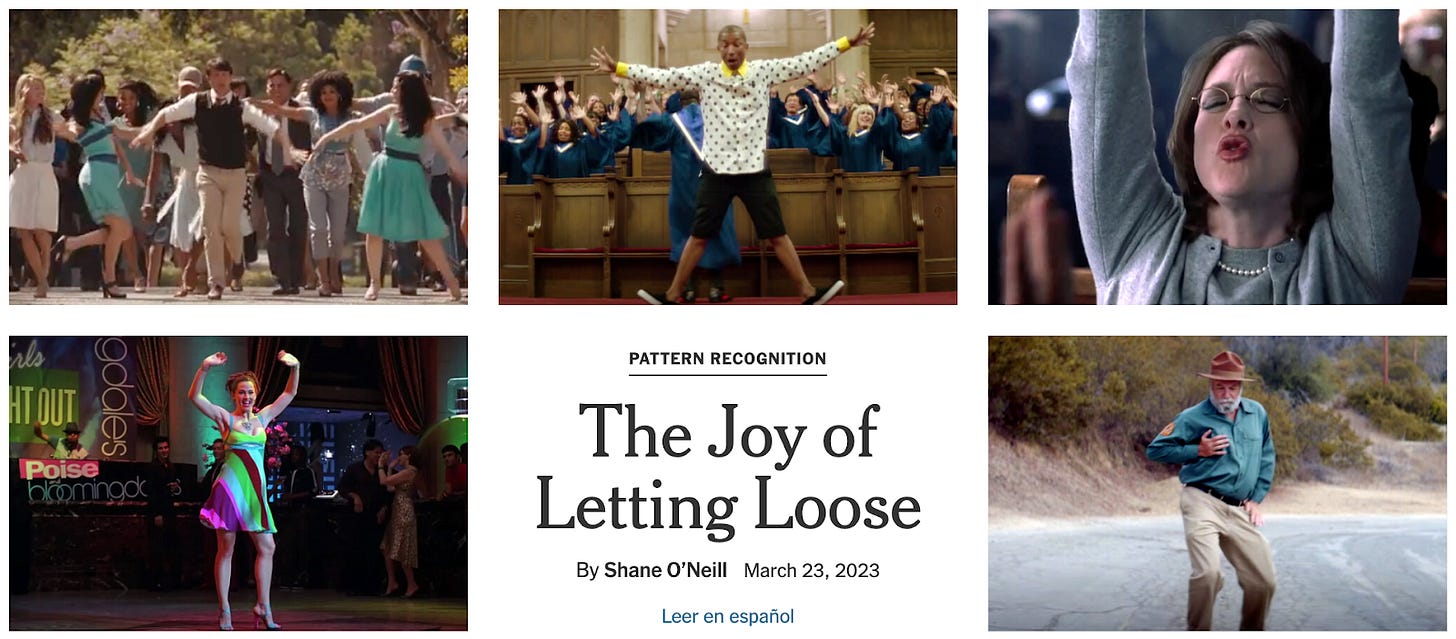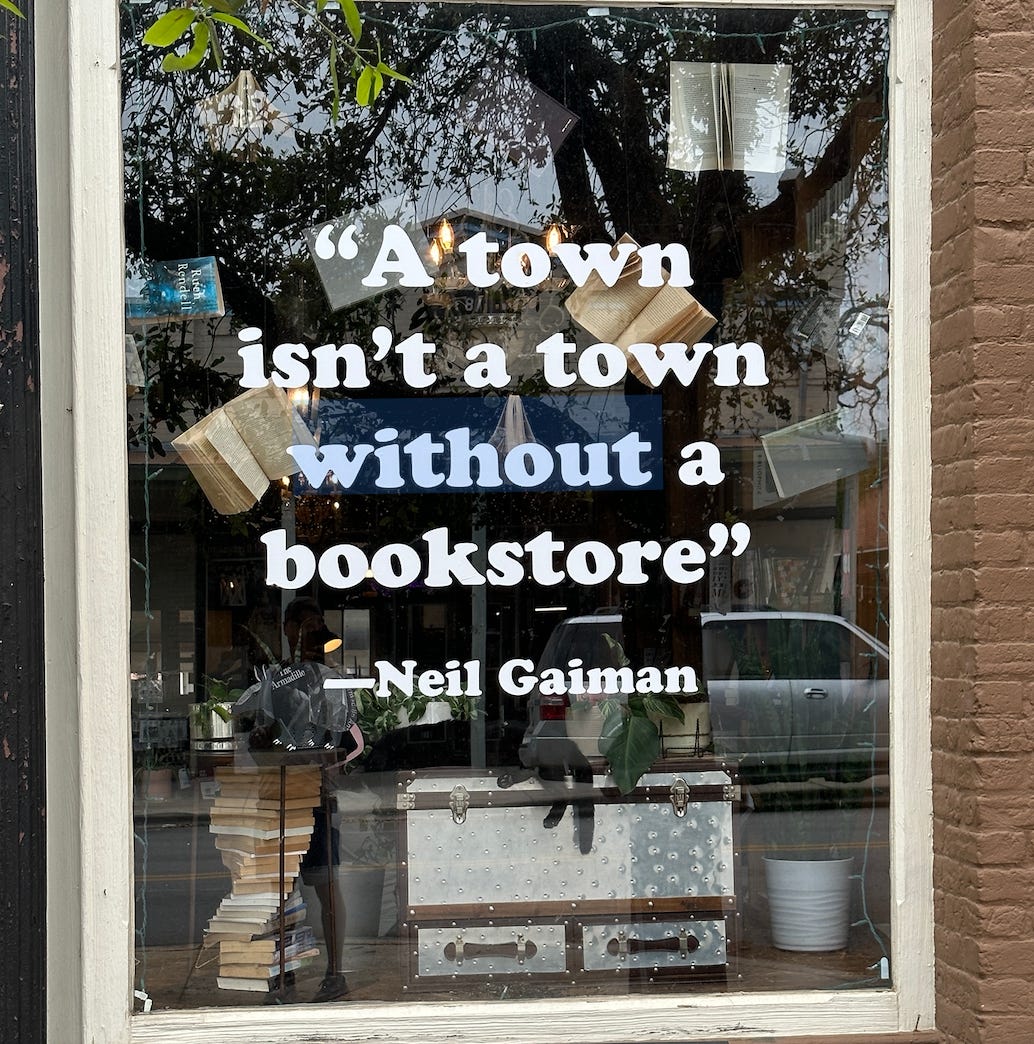Brand-Berger Helper
Jonah Berger discusses his new research on more effective marketing and branded content.
Welcome to the Creativity Business, a newsletter about how to earn attention as a marketer or content creator. If you’re not a subscriber, sign up and get content strategy delivered to your inbox every two weeks for free.
This is part two of my conversation with best-selling author and professor of Marketing at Wharton, Jonah Berger. Part one is here.
When I read Jonah Berger’s new book about the power of language, Magic Words, I was thrilled to find that the chapter on emotions talks explicitly about earning attention. I asked Jonah for his thoughts on the differences between attracting initial attention versus holding it.
“I personally think about that a lot. It's a little bit like food. Sometimes food is delicious and sometimes food is nutritious. But the goal is for it to be both. And so you want it to be delicious enough that it grabs our attention - otherwise, the nutritious stuff isn't going to get digested. But it also has to be nutritious enough that once you've given it some attention, you've actually learned something at the end of the day.”
Jonah and his team at Wharton have been doing research with long-form articles to find out what factors earn more attention than others. It turns out that both the nature of the content and the formatting have an impact.
“We found certain types of emotions are a big factor - and not just positive or negative emotions, but whether the emotions are uncertain. Whether they evoke high arousal.
Similarly, how easy it is to read the content? The easier it is, the more likely people are to continue.”
Jonah’s Next Idea is the Hidden Secret to Happiness, Health, and Infinite Wealth!
One of my ongoing frustrations with content strategy has been the weaponization of headlines with vapid click-bait strategies that, to use Berger’s metaphor, have pretty much zero nutritional value. I asked him about click-bait… and YOU WON’T BELIEVE WHAT HE SAID NEXT!
“I wouldn't say it’s easy to attract people's attention. Certain things attract it, but holding it is also really important, particularly if we want to change minds or drive action. It's not just important to get a click. We've gotta get people to read enough about something so that they learn or change. And that's where holding attention becomes really important.”
Brands Talking Like Humans
Another concept in Magic Words is called Start and Build - to build trust and relationships effectively, you can Start by being a little bit vulnerable and Build that vulnerability over time. I wanted to know whether companies should be thinking about their brand voice and perhaps lean away from closed, corporate speak and lean more into vulnerable self-disclosure.
“It's an interesting thought. I think brands are certainly experimenting with talking more like regular people. We've been doing some work recently on when brands talk like people on social media. What makes brands seem more human? Is it using personal pronouns like me and you and we, that sort of make it seem more like a real person? Is it the topics that they talk about?
I certainly think, at least in many categories, when brands feel like people, it's more likely that I want to spend time interacting with them. I don't know if that's true of a bank, for example, but certainly a clothing brand, or a sports team, the more they feel like real people, the more I may want to engage.”
Jonah was also quick to point out some of the risks and limitations of being vulnerable and more human as a brand.
“The challenge is, what does it mean to have a brand reveal something about itself? And is that thing about them themselves? Is it really sort of showing the personal taste, the humor, whatever it might be of the individual humans behind that social media page?”
I brought up my recent fascination with Oatly (the oat milk I mentioned in the last newsletter). The human-esque voice and strong values definitely earned my attention and made me decide to write about it in my newsletter. The same happened with Ann Handley and Angela Matusik.
“So generating word of mouth is good. I think the question is, do you want to engage with that brand? Do you want to purchase from it? I think a brand talking like a person can be off-putting. Also, the more a brand has a personality, there's a chance that it may not fit with your personality or what you want from a brand.”
How to Make Less Exciting Subject Matter More Compelling
Often, brands want to talk about topics that by their very nature are not particularly exciting or attention-worthy. Insurance might be a good placeholder example of a topic that most people aren’t inherently excited to read about. So what is an insurance company to do if they want to earn attention more effectively? Berger’s study that analyzed which factors influence long-form article reading and engagement contains some concrete answers.
“While topics certainly matter, the right style can compensate for topic. What do I mean by style? So by first using familiar or concrete language, it’ll be more likely to hold people's attention. Familiar language is just words I've heard before and can understand. Concrete language is what I can touch, smell, feel, and interact with.
That makes it easier to understand and remember, right? Abstract ideas are harder to parse than concrete ones.”
There is another factor that drives deeper attention and engagement, regardless of the topic choice: uncertainty.
“When content that evokes uncertainty in general, people tend to keep reading because they want to resolve that uncertainty. If I don't know what happens, I want to read to find out what happens. Just like a good mystery. Not just clickbait curiosity gaps - you know, opening up something but not really delivering - but more unveiling a mystery over the course of the content can keep people engaged.”
Overcoming Audience Skepticism About Branded Content
We now get to one of the biggest problems with marketing - getting people to overcome their suspicion that material produced by a brand is a selfishly disguised infomercial or ad. How can brands encourage audiences to trust that there is real value in their marketing and to make the decision to start reading, listening, or watching?
“I love the idea of lowering the barrier to trial. Making it easier for people to experience the value of what you're offering.”
And one of the best ways to do that, according to Berger, is to create content instead of ads. (Hallelujah!)
“Rather than talking about how great we are, giving people useful or entertaining content so that they're spending more time with us and learning about our knowledge of a space. If we have a friend and all that friend ever does is talk about how great they are, we're probably not going to want to hang out with them. Whereas if that friend is giving us useful, entertaining information, we want to hang out with them.
Brands can serve the same function. Rather than interrupting what consumers want to be consuming with ads that they don't want to see, instead creating content that consumers want to consume that's brought to you by the brand.”
For those of you that have known me for a while, you can imagine how happy I was to hear this from Jonah. I have been espousing the power of content from brands for almost a decade and passionately agree with his thinking about this. So, we dug in even further and explored the concept of brand as media company instead of brand as advertiser.
Think Like a Media Company to Earn Attention
“We're shifting in the way that brands think about attention, or the world is thinking about attention. Brands used to think about attention very much in a paid media capacity. I don't have my own media channel, so I’m going to pay somebody else to leverage their channel. They already have your attention and you're going to have to sit through my message to check out the stuff that you want to check out.
But today, media is fragmented, and brands have realized that they can become their own media channels. And so maybe that's more efficient and a better way to interact our customers. Hopefully, brands and organizations are valuing attention a little bit more than they used to.”
The Marketing Mindset Shift
If brands are starting to value attention more than in the past and shifting towards earning it instead of interrupting it, perhaps the biggest shift required is a different mindset - a mindset rooted in empathy (understanding the audience) and generosity (creating value for others first). I asked Jonah what sort of values brands need to be effective in earning attention today.
“Everybody thinks marketing is about selling what you can make, right? You're a company, you produce something, how can you sell it?
Modern marketing is the opposite - it is really about making what you can sell. It's not ending with the customer. It's not developing the product or service and then afterwards figuring out how to sell it to the customer. It's starting with the customer. It's starting with understanding them and their needs, and then developing products and services that meet those needs. It really starts with understanding.
The more you understand about the other party, the better off you can both do. By understanding them, you make them better off, but also you can even make yourself better off, right?”
YES, YES, and MORE YES. I may have to make Jonah Berger the Patron Saint of Earning Attention.
Takeaways
Don’t just think about attracting initial attention - you have to also do the work to hold it. And that means delicious and nutritious.
Create content that arouses emotions or introduces (and then eliminates) uncertainty.
Easily consumable formatting increases the depth of consumption.
Does your brand voice sound more corporate or more human? Consider a Start and Build strategy for your brand voice, but evaluate the pros and cons for your unique brand, industry, and audience.
Use familiar and concrete language instead of abstract language to make less exciting topics more compelling.
To truly earn attention, think about lowering the barrier to trial - are you making original content designed for your audience instead of a paid-only strategy?
Next level - is your brand thinking and acting like a media company and serving your audience with unique value?
Are you approaching your marketing strategy through the lens of deeply understanding your potential customers? Are you embracing empathy and generosity?
What’s Earned My Attention Recently
A New New York Times Format
I am a sucker for new formats of storytelling and the New York Times seems to consistently innovate in this space. I remember seeing Snowfall for the first time many years ago and being blown away, followed by the avalanche (sorry) of copycat Parallax Storytelling. This week, I was hugely engaged by the form of this story about the peak of “Letting Loose” in pop culture and I’m curious to see if we see more of it soon.
The Ben Evans Mega-Deck 2023
Every year, Benedict Evans puts together a massive slidedeck with a look toward the near future. This year’s is full of great data and insights for any marketer. I love the quote above, followed by the stat that the largest advertiser in the world is… Amazon.
AB InBev Launches an Entertainment Studio
AB InBev announced the launch of a content studio with “Spotlight” producer, Michael Sugar. The subheading that caught my eye was this: “It's the latest big marketer to turn to Hollywood content to reach increasingly ad-avoidant consumers.” To me, this is an ever increasing sign that progressive brands are realizing that they need to make great content if they want to earn attention.
Ryan Holiday’s Painted Porch Bookstore
Finally, this REALLY earned my attention. Author and Stoicism legend, Ryan Holiday, and his wife, Sam, opened an independent bookstore in Bastrup, Texas two years ago. Everyone he knew told him it was a bad idea, but he and Sam decided to do it anyway. Ryan has built his office for writing and content production into the building, and it’s a highly curated, limited selection of books that he and Sam have actually read and personally recommend.
So when my wife attended a medical conference last week in Austin, I decided to tag along to see a few friends and stuff myself full of barbeque. However, I ALSO rented a car and drove 45 minutes to Bastrup to visit The Painted Porch. I met Sam and had a great chat about enhanced audiobooks, I bought three great books, and I experienced the magic of a small-town store that is unique and 100% differentiated from any other bookstore to which I’ve been.
When you create something that makes a guy from Vancouver rent a car and drive 45 minutes to Bastrup to visit, you’re doing a phenomenal job of Earning Attention.












